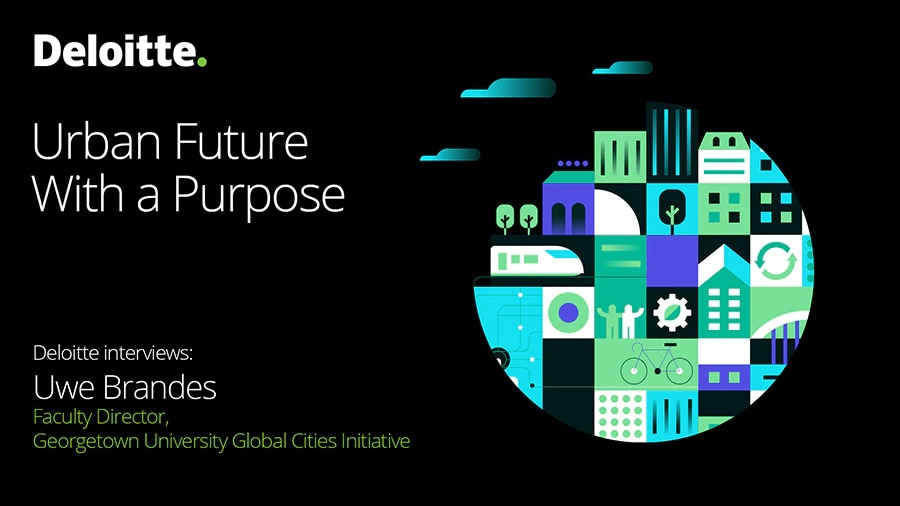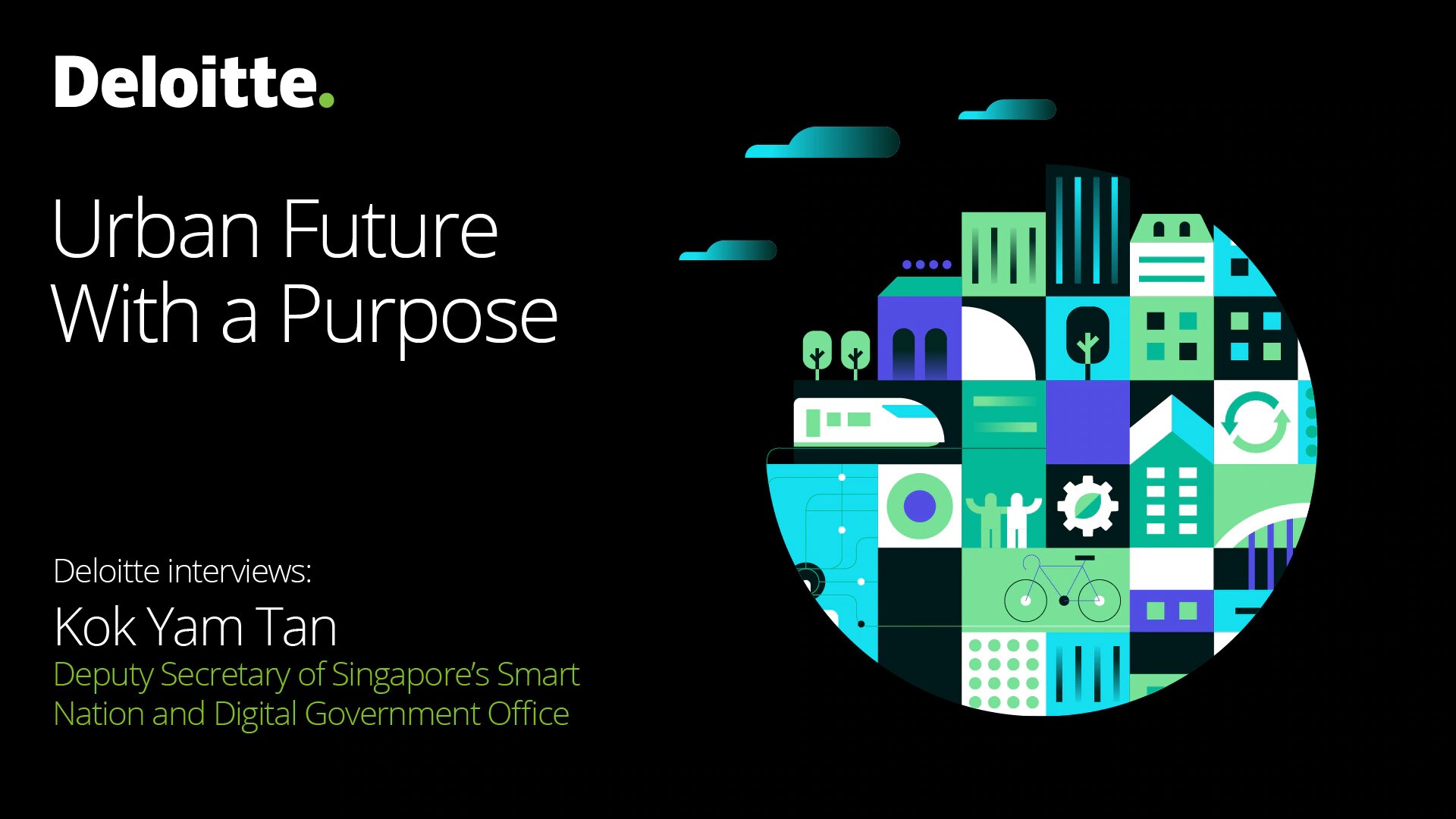Smart and Sustainable Buildings and Infrastructure
Cities aim to have regenerated buildings, and to leverage data to optimise energy consumption and the use and management of resources in buildings and utilities: waste, water and energy.
Imagine having a city where residents have a high level of wellbeing and yet still do not make extensive use of the planet’s resources. In 2019, the Coalition for Urban Transitions estimated that it should be possible to cut emissions from cities by about 90 per cent by 2050 (15.5 GtCO2e by 2050) using proven technologies and practices, in particular for buildings and infrastructure. It is estimated that 36.5 per cent can be cut from residential buildings and 21.2 per cent from commercial buildings.1 Buildings are currently responsible for 30 to 40 per cent of total city emissions; and in order to achieve the COP21 target by 2050, emissions from buildings must be 80-90 per cent lower than they are today.2
Many buildings are energy inefficient and contribute heavily to carbon emissions. In the EU, as of February 2020, roughly 75 per cent of building stock was energy inefficient.3 So there is a long way to go: a 2019 Navigant report stated that only five per cent of the smart city projects that it tracked had a focus that was primarily on building innovation, and just 13 per cent had ‘some level of focus’.4
The World Green Building Council defines a green building as one that “in its design, construction or operation, reduces or eliminates negative impacts, and can create positive impacts, on our climate and natural environment; preserve precious natural resources and improve our quality of life”.5 Given the pressure on cities to act on climate change, green buildings are going to invade our urban centres. Besides being built with sustainable and ethical materials, they will be energy, water and resources-efficient, environmental-friendly by design, and capable of producing their own energy (electricity prosumers). Vertical and/or rooftop gardens will foster quality of living and a good environment for those who live in them or use them.
Green buildings will also leverage data and digital technology to improve the efficiency of infrastructure components and to adapt better to stakeholders’ usage. Flexible office operators will apply an Office-as-a-Service or Real Estate-as-a-Service approach, involving a ’pay as you go’ and ’pay as you grow’ revenue model, aligned with an outcome of improved experience and productivity.
Gartner predicts that by 2028 there will be over four billion connected IoT devices in commercial smart buildings.6 They will be powered by telecommunications infrastructures, with 5G and High Efficiency Wi-Fi (6 or 6E) at the forefront, and will have smart utilities for power, waste and water.
As of May 2020, 28 major cities had signed the World Green Building Council’s Net Zero Carbon Buildings Commitment,7 which calls for cities to reach net zero carbon in operation by 2030 for all assets under their direct control, and to advocate for all buildings to become net zero carbon in operation by 2050.
Efficient smart infrastructure will evolve with a focus on a people-first approach to construction. This will help city leaders to implement a more holistic wellbeing concept for contributing to a better quality of life through smart and sustainable buildings and a well-integrated and intelligent city infrastructure. According to a study led by ESI ThoughtLab, smart waters meters and smart grids have an adoption rate of around 68 per cent globally.8 The trend is upwards.
Smart and sustainable buildings open up a future to environments that do not just support our ways of living, but actually augment and enhance them. Smart buildings will serve as ambient social infrastructure that connects and interacts with occupants to improve their circumstances, by bringing features, services and information right to our location. Through smart buildings people no longer occupy a space, they engage with a place. With smart buildings architecture has evolved from designing structures and objects, to the design of systems and interactions. This leads to a human-centric future, where each interaction by the smart building with its occupants becomes an opportunity to learn and improve or enhance that interaction the next time around. Buildings tend to be integrated like never before into the way we work and live – as a result of a correlation of building and human performance.
“In order to meet the goals of the Paris Agreement to limit global warming, we need to see in the next ten or so years the majority of our buildings become net zero carbon. Any guess on how many cities currently meet that goal? Less than one per cent. There is a staggering challenge here.”
-Jeff Merritt, Head of IoT and Urban Transformation at the World Economic Forum
“Examples of smart infrastructure include intelligent traffic systems and other geospatial data and information which can make infrastructure planning more responsive to citizens’ needs and enable the efficiency of service delivery, garbage collection, water sanitation.…”
-Sameh Wahba, Global Director of Urban, Disaster Risk Management, Resilience and Land Global Practice at the World Bank
Video Interviews
Podcasts

Podcast with Uwe Brandes - Faculty Director, Georgetown University Global Cities Initiative

Podcast with Kok Yam Tan - Deputy Secretary of Singapore’s Smart Nation and Digital Government Office
End Notes :
- Coalition for Urban Transitions. Climate Emergency, Urban Opportunity. (2019)
- C40: Summary for Urban Policy Makers. (2018)
- European Commission: In focus: Energy Efficiency in Buildings. (2020)
- Navigant Research: Navigant Research’s Smart City Tracker 2Q19 Highlights 443 Projects Spanning 286 Cities Around the World. (2019)
- World Green Building Council: What is green building?; About green building.
- Gartner: Hype Cycle for Smart City Technologies and Solutions. (2019)
- CNBC: The planet has a problem with buildings: Here’s how smart ideas, tech and design can change that. (2020)
- ESI ThoughtLab: Smart City solutions in a riskier world. (2021)
- CNBC: The planet has a problem with buildings: Here’s how smart ideas, tech and design can change that. (2020)
- MicroShade: Should all-glass skyscrapers be banned?. (2020)
- ArchDaily: De Blasio's Glass Skyscraper Ban: What Alternative Materials Could Take its Place? (2020)
- European Commission: Renovation wave. (2021)
- World Green Building Council: 11th Annual World Green Building Week Sparks Over 200 Events Across 40 Countries. (2020)
- Building and Construction Authority, Singapore: 3rd Green Building Masterplan. (2014)
- Ministry of National Development, Singapore: BCA Green Mark.
- World Economic Forum: Singapore has an innovative new way to design its buildings. (2020)
- Smart Nation and Digital Government Office, Singapore: Punggol to be a full-fledged Smart Town. (2021)
- CNN Style: Singapore is building a 42,000-home eco 'smart' city. (2021)
- Housing & Development Board: Tengah; Presentation of Tengah by the Housing & Development Board.
You may access the links to these sources, where available, on page 148 of the Urban Future with a Purpose study.





